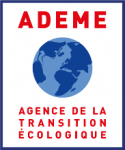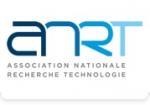Cartographie des potentiels de surface des oxydes métalliques activées catalytiquement utilisés comme des photoanodes // Mapping surface potentials of catalytically activated metal oxide photoanodes
| ABG-133773 | Sujet de Thèse | |
| 11/10/2025 | Financement public/privé |
CEA Paris-Saclay Laboratoire Nano-Magnétisme et Oxydes
Saclay
Cartographie des potentiels de surface des oxydes métalliques activées catalytiquement utilisés comme des photoanodes // Mapping surface potentials of catalytically activated metal oxide photoanodes
- Physique
Physique du solide, surfaces et interfaces / Physique de l’état condensé, chimie et nanosciences
Description du sujet
Lors de la photoélectrolyse d’eau, le transfert de charges à l'interface photoanode/électrolyte est déterminé par l'alignement des bandes d'énergie, à la fois côté électrode et côté électrolyte. Le potentiel de surface de l’électrode joue un rôle majeur sur la courbure finale des bandes et par conséquent sur la séparation des charges à l’interface. Aussi appelé potentiel de surface électrochimique, il varie en fonction de l'environnement (vide, air, eau, etc.). L'objectif de cette thèse est d'aborder la réaction d’oxydation de l’eau (OER) à l'interface photoanode/électrolyte en termes de bandes d'énergie et en particulier du point de vue du potentiel de surface électrochimique. Ainsi, au cours de cette thèse, le doctorant caractérisera les potentiels de surface d'une série de photoanodes (oxydes métallique semiconducteurs activées catalytiquement) en contact avec différents environnements (vide, air à humidité variable, eau) et les corrélera à l'activité photoélectrochimique (PEC). L'activité du doctorant s'articulera autour de quatre axes : i) synthèse de photoanodes par voie chimique ; ii) caractérisation de l'activité photoélectrochimique ; iii) caractérisation par microscopie à force atomique (AFM) corrélée à la microscopie à force de Kelvin (KPFM) ; iv) spectromicroscopies de rayons X synchrotron (STXM, XPEEM) et photoémission à pression ambiante (NAP-XPS). L'étudiant sera accueilli au laboratoire SPEC du CEA-Saclay pendant toute la durée de sa thèse. Ses travaux s'inscrivent dans le cadre d'une collaboration de longue date entre SPEC et SOLEIL.
------------------------------------------------------------------------------------------------------------------------------------------------------------------------
------------------------------------------------------------------------------------------------------------------------------------------------------------------------
During photoelectrolysis (or solar water splitting), charge transfer at the photoanode / electrolyte interface is determined by the alignment between energy bands, both at the electrode and electrolyte side. Surface potential of the electrode plays a major role on the final band bending and thus charge separation at the interface. Also called electrochemical surface potential, it varies as a function of material environment (vacuum, air, water, etc.). The objective of this thesis is to address the OER (Oxygen Evolution Reaction) at the photoanode / electrolyte interface in terms of energy bands and in particular from the electrochemical surface potential perspective. Thus, during this thesis the student will characterize surface potentials of a series of catalytically activated metal oxide photoanodes in contact with different environments (vacuum, variable humidity air, water) and correlate it to photoelectrochemical activity. PhD student’s activity will be structured around fours axes: i) synthesis of photoanodes; ii) photoelectrochemical activity characterization; iii) characterization by atomic force microscopy (AFM) correlated with Kelvin force microscopy (KPFM); iv) synchrotron X-ray spectromicroscopies (STXM, XPEEM) and near ambient pressure photoemission (NAP-XPS). The student will be hosted at the SPEC laboratory at CEA-Saclay for the duration of the thesis. His\Her work is part of a long-standing collaboration between SPEC and SOLEIL.
------------------------------------------------------------------------------------------------------------------------------------------------------------------------
------------------------------------------------------------------------------------------------------------------------------------------------------------------------
Pôle fr : Direction de la Recherche Fondamentale
Département : Institut rayonnement et matière de Saclay
Service : Service de Physique de l’Etat Condensé
Laboratoire : Laboratoire Nano-Magnétisme et Oxydes
Date de début souhaitée : 01-09-2026
Ecole doctorale : Physique en Île-de-France (EDPIF)
Directeur de thèse : STANESCU Dana
Organisme : CEA
Laboratoire : DRF/IRAMIS/SPEC/LNO
URL : https://iramis.cea.fr/en/pisp/dana-stanescu/
URL : https://iramis.cea.fr/spec/lno/
URL : https://www.synchrotron-soleil.fr/fr/lignes-de-lumiere/hermes
------------------------------------------------------------------------------------------------------------------------------------------------------------------------
------------------------------------------------------------------------------------------------------------------------------------------------------------------------
During photoelectrolysis (or solar water splitting), charge transfer at the photoanode / electrolyte interface is determined by the alignment between energy bands, both at the electrode and electrolyte side. Surface potential of the electrode plays a major role on the final band bending and thus charge separation at the interface. Also called electrochemical surface potential, it varies as a function of material environment (vacuum, air, water, etc.). The objective of this thesis is to address the OER (Oxygen Evolution Reaction) at the photoanode / electrolyte interface in terms of energy bands and in particular from the electrochemical surface potential perspective. Thus, during this thesis the student will characterize surface potentials of a series of catalytically activated metal oxide photoanodes in contact with different environments (vacuum, variable humidity air, water) and correlate it to photoelectrochemical activity. PhD student’s activity will be structured around fours axes: i) synthesis of photoanodes; ii) photoelectrochemical activity characterization; iii) characterization by atomic force microscopy (AFM) correlated with Kelvin force microscopy (KPFM); iv) synchrotron X-ray spectromicroscopies (STXM, XPEEM) and near ambient pressure photoemission (NAP-XPS). The student will be hosted at the SPEC laboratory at CEA-Saclay for the duration of the thesis. His\Her work is part of a long-standing collaboration between SPEC and SOLEIL.
------------------------------------------------------------------------------------------------------------------------------------------------------------------------
------------------------------------------------------------------------------------------------------------------------------------------------------------------------
Pôle fr : Direction de la Recherche Fondamentale
Département : Institut rayonnement et matière de Saclay
Service : Service de Physique de l’Etat Condensé
Laboratoire : Laboratoire Nano-Magnétisme et Oxydes
Date de début souhaitée : 01-09-2026
Ecole doctorale : Physique en Île-de-France (EDPIF)
Directeur de thèse : STANESCU Dana
Organisme : CEA
Laboratoire : DRF/IRAMIS/SPEC/LNO
URL : https://iramis.cea.fr/en/pisp/dana-stanescu/
URL : https://iramis.cea.fr/spec/lno/
URL : https://www.synchrotron-soleil.fr/fr/lignes-de-lumiere/hermes
Nature du financement
Financement public/privé
Précisions sur le financement
Présentation établissement et labo d'accueil
CEA Paris-Saclay Laboratoire Nano-Magnétisme et Oxydes
Pôle fr : Direction de la Recherche Fondamentale
Département : Institut rayonnement et matière de Saclay
Service : Service de Physique de l’Etat Condensé
Profil du candidat
physique de semiconducteurs, photoelectrochimie
Postuler
Fermer
Vous avez déjà un compte ?
Nouvel utilisateur ?
Besoin d'informations sur l'ABG ?
Vous souhaitez recevoir nos infolettres ?
Découvrez nos adhérents
 Aérocentre, Pôle d'excellence régional
Aérocentre, Pôle d'excellence régional  ASNR - Autorité de sûreté nucléaire et de radioprotection - Siège
ASNR - Autorité de sûreté nucléaire et de radioprotection - Siège  CASDEN
CASDEN  PhDOOC
PhDOOC  ONERA - The French Aerospace Lab
ONERA - The French Aerospace Lab  Nokia Bell Labs France
Nokia Bell Labs France  MabDesign
MabDesign  ADEME
ADEME  Ifremer
Ifremer  TotalEnergies
TotalEnergies  Généthon
Généthon  Laboratoire National de Métrologie et d'Essais - LNE
Laboratoire National de Métrologie et d'Essais - LNE  Groupe AFNOR - Association française de normalisation
Groupe AFNOR - Association française de normalisation  Tecknowmetrix
Tecknowmetrix  Institut Sup'biotech de Paris
Institut Sup'biotech de Paris  SUEZ
SUEZ  MabDesign
MabDesign  ANRT
ANRT  CESI
CESI
